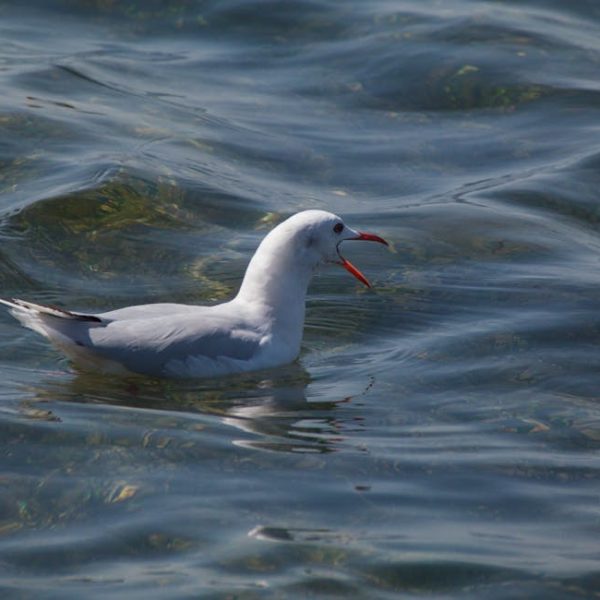While it may seem inexplicable, sightings of deer feeding on birds do occur, albeit rarely. Do these observations reflect a fundamental change in deer dietary habits or exceptional, opportunistic behavior?
Understanding Deer’s Dietary Habits
Deer are renowned herbivores, obtaining the majority of their nutrients from an assortment of plant-based sources. On a typical day, the deer’s menu includes a variety of leaves, twigs, fruits, and nuts. As browsing animals, they prefer to nibble on small portions from multiple food sources often causing distinct ‘browsing lines’ in the vegetation. Here’s a categorization of their common meals:
- Leaves and Twigs: These comprise most of their diet. They are particularly fond of deciduous tree foliage and bushy plants.
- Fruits and Nuts: They adore acorns, apples, and pretty much any ripe fruit they can find.
- Grass is typically a fallback option when more desirable food isn’t readily available.
Pro Tip: Watch for neatly clipped twig ends and ‘browsing lines’ in vegetation. These are tell-tale signs of a deer’s feeding habits in the wild.
Instances of Deer Eating Birds: Anomalies or Habit?
There are numerous documented instances of deer consuming small birds and our bewilderment at this unusual behavior underscores the sharp contrast to deer’s typical herbivorous dietary habits. The internet is awash with startling images and videos of deer engaged in this unconventional feeding behavior.
Unfortunately, these surprising snapshots, without the context, often lead to sensationalism and misinformation. Thus, it is crucial to view them with discernment. Any narrative that suggests deer are carnivorous is misleading at best. Even other herbivores, when given a chance, may indulge in similar atypical feeding behavior. For instance, cows have been seen eating chicks in their pastures, and it is common for herbivorous reptiles to eat small animals if given a chance.
ᴄᴏᴍᴘᴀʀɪsᴏɴ ɪɴᴛʀᴏᴅᴜᴄᴛɪᴏɴ
| Animal | Typical Dietary Habits | Documented Atypical Behavior |
|---|---|---|
| Deer | Herbivore (Leaves, twigs, fruits, nuts) | Consuming small birds |
| Cows | Herbivore (Grasses) | Eating chicks |
| Tortoise | Herbivore (Grass, fruits, flowers) | Feeding on small animals |
It is important to remember that these are exceptions, and not the rule, revealing the versatile adaptations animals can make when presented with a feeding opportunity.
Scientific Explanifications Behind Deer Eating Birds
The concept of deer consuming birds may seem aberrant, but from a scientific perspective, there are plausible conditions leading to this unexpected behavior.
- Opportunistic Feeding: In the wild, surviving often means making the most of opportunities. In situations where a small, injured, or dead bird is readily accessible, a deer may seize the chance for an easy meal.
- Nutritional Need: Occasionally, deer may require certain nutrients – that their usual plant-based diet lacks – to meet energy demands or compensate for deficiencies.
- Unusual Availability of Prey: Especially during spring and early summer, baby birds fallen from nests can provide an unexpected, easy meal.
The chances of a deer eating a bird may increase if these conditions exist. However, consuming birds is unlikely to become a regular behavior for deer as it does not align with their typical feeding habits, digestive system, and nutritional needs.
As we continue to unravel the peculiarities of this behavior, we must also consider its potential effects on the broader ecosystem, including possible impacts on bird populations and disruptions to established food chains. As the contours of this fascinating interaction between deer and birds become clear, we realize the implications for conservation efforts and wildlife management.
Effects of Deer’s Bird-eating on Ecosystem
While uncommon, deer’s bird-eating behavior can potentially ripple across the surrounding ecosystem in various ways. It’s vital, therefore, to realize these potential impacts that may stem from this exceptional feeding activity.
- Population Control: By preying on small or vulnerable birds, deer might inadvertently serve as a population control mechanism.
- Food Chain Disruption: Deer eating birds could disrupt established food chains. Small carnivores or scavengers that traditionally feast on such prey might face increased competition.
- Nutrient Cycling: By introducing animal matter into their diet, deer could affect nutrient cycling in their habitats.
Pro Tip: Observing and documenting these interactions can be instrumental in monitoring the health of an ecosystem and predicting potential changes.
Implications for Conservation and Wildlife Management
Observations of deer consuming birds can provide valuable insights for conservation and wildlife management efforts. It can highlight the adaptability of deer in response to changing conditions, presenting both challenges and opportunities to wildlife managers.
- Monitoring Changes: These anomalies can serve as indicators of changes within the ecosystem, such as alterations in food availability or shifts in the population dynamics of other species.
- Strategy Adaptation: The inherent adaptability of deer might necessitate adjustments in conservation strategies. Wildlife managers may need to factor in these atypical feeding behaviors while planning and implementing protective measures.
- Intervention Protocols: If deer exhibit a marked increase in bird consumption, measures may be warranted to ensure that such behavior does not negatively impact the local bird population or ecosystem balance.
Comparatively, consider the implications of dietary shifts in other wild animal populations:
| Animal | Typical Dietary Habits | Atypical Behavior | Implications for Conservation |
|---|---|---|---|
| Deer | Herbivore (Leaves, twigs, fruits, nuts) | Consuming small birds | Adjustment in conservation strategies; possibility of intervention if bird-eating behavior increases |
| Bears | Omnivore (Berries, insects, fish, small mammals) | Eating human-provided foods | Efforts to encourage natural feeding habits; measures to minimize human-animal conflicts |
| Sea Turtles | Herbivore/Carnivore (Seaweed, jellyfish, shellfish) | Consuming plastic waste | Intensified ocean clean-up campaigns; increased education on plastic pollution |
As you can see, monitoring and understanding these dietary shifts amongst wildlife is critical not only for the individual species involved but also for the broader landscape of preservation and conservation efforts. After all, even seemingly small changes in an animal’s behavior can signal more significant transformations within the larger environmental context. The complex interplay of factors prompts wildlife management practices to be proactive, adaptive, and sensitive to even the subtlest of changes within ecosystems.
Conclusion
In conclusion, while the instances of deer eating birds seem odd, they underscore the remarkable flexibility and adaptability of wild animals when it comes to survival. These sightings serve as reminders of the continual ebb and flow within nature, compelling us to study, understand, and protect the intricate webs of life with renewed vigor. Indeed, for the curious observer and the seasoned ecologist alike, these moments shed light on nature’s unexpected yet fascinating nuances.
Key Takeaway:
- Deer, as herbivores, primarily consume plant materials like leaves, twigs, fruits, and nuts.
- Instances of deer consuming birds are unusual and not reflective of their typical dietary habits.
- These rare instances can be attributed to opportunistic feeding, nutritional needs, or unusual availability of prey.
- The phenomenon can impact the ecosystem, including possible effects on bird population and disruption to the food chains.
- Observations of deer eating birds can provide insight for conservation and wildlife management, including potential strategy adaptation and intervention protocols.
Remember, the observations of deer feeding on birds, while puzzling, only serve to underline the fascinating complexity of nature, rather than indicating a fundamental dietary shift. As we nurture our understanding of these rare behaviors, we better equip ourselves to protect and conserve the intricate ecosystem we’re a part of.
FAQs
Q: What might lead a deer to eat a bird despite its normal herbivorous diet?
A: Unusual situations like easy accessibility to injured, dead, or baby birds, nutritional needs, or a chance encounter might lead a deer to consume a bird.
Q: How does this unusual deer behavior potentially impact the ecosystem?
A: Deer consuming birds can disrupt established food chains, affect nutrient cycling, and may even serve as an inadvertent population control mechanism for birds.
Q: How does observing this behavior help in wildlife management and conservation efforts?
A: Such observations offer vital insights into changes within the ecosystem and the adaptability of deer, helping wildlife managers better adapt and implement conservation strategies.
Q: Are there any other herbivores known to occasionally eat meat?
A: Yes, several herbivores like cows and some reptiles have been observed eating small animals, given the chance. These are anomalies and are not the norm.
Q: Does this mean that deer and other herbivores are turning carnivorous?
A: No, these are exceptions, not the rule. The primary diet of these animals remains plant-based, and they are not shifting towards a carnivorous diet.
We encourage you to share this article and continue exploring more posts on our website on intriguing wildlife behaviors and their deeper implications within the ecosystem.












